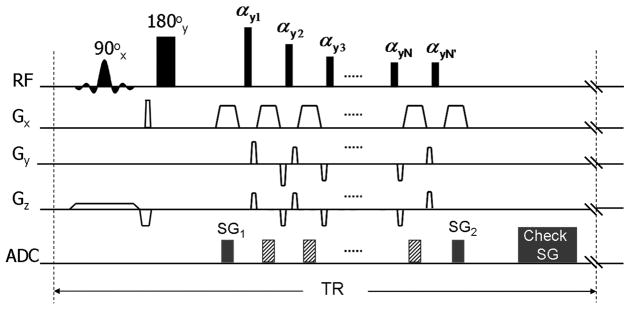Fig. 1.
The sequence diagram of the T2-weighted self-gated SPACE (SG-SPACE) sequence. The conventional T2-weighted SPACE acquisition employs a slab-selective excitation RFpulse (90°x) and a spatially nonselective refocusing (180°y) pulse followed by a series of variable-flip-angle nonselective refocusing pulses (αy1, αy2, αy3,…, αyN). The SG-SPACE sequence requires the following modifications: i) at the first spin-echo, the phase-encoding (Gy) and partition-encoding (Gz) gradient tables were nulled; ii) the last refocusing RF pulse of the pulse train was duplicated (αyN’) immediately after the train to generate one more spin-echo; iii) two SG readouts (denoted as SG1 and SG2) were added, one at the first spin-echo and the other at the last one. The accept/reject decision is made based on the analysis of SG signals before the data acquisition in the next TR.

